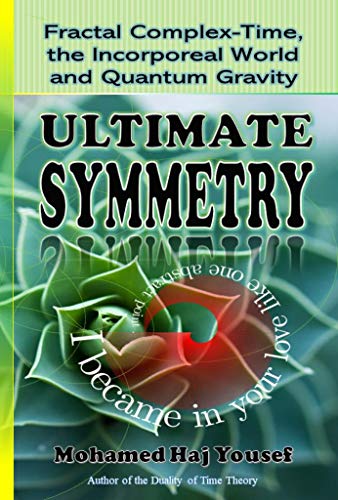III.2.9 Method IV (complex momentum and
energy-momentum relation)
The equation: , that
gives the relativistic energy-momentum, can be also derived directly from the
fundamental definition of momentum: , when
we include the metaphysical creation of mass in the inner levels of time, in
addition to its physical motion in the outer level, and by taking into account
the complex character of time. Thus we need to integrate over
the inner and outer levels, according to what happens in each stage; first by
integrating between and on the
inner real levels of time where the particle is created, or being perpetually
re-created, at the speed of creation , and this term makes the real part of the
complex momentum . Then
we integrate between and on the
outer imaginary level of time where the particle whose mass is gains
an apparent velocity , and thus its effective mass increases
from to , and this term makes
the imaginary part of the complex momentum :
(3.16)
The first term gives us the real momentum ,
while the second term gives the imaginary momentum . So
the total complex momentum is: .
Hence the modulus of this total complex momentum is given by:
(3.17)
Again, we notice here that the contribution of the
imaginary momentum is
negative with relation to the real momentum , just
like the case of and as we
have seen in sections 2.4.2 and 3.1.6, and as it will be also the case for
complex energy as we shall see in section III.3.1 further below. All this is
because the normal time, or physical motion, is interrupting the real creation,
which is causing the disturbance and curvature of the otherwise infinite
homogeneous Euclidean space that describes the vacuum state .
Therefore, to obtain the relativistic energy-momentum
relation from equation 3.17, we simply multiply by :
(3.18)
These equations 3.17 and 3.18 above, with the negative
sign, do not contradict the equation: in
current Relativity, which treats energy as scalar and do not realize its
complex dimensions (see also section III.3.1 below). Practically, in any
mass-energy interaction or conversion, the negative term will be converted back
to positive because when the potential energy is
released, in nuclear interactions for example, this means that it has been
released from the inner levels of time where it is captured as mass, into the
outer level to become kinetic energy or radiation. In other words: the
absorption and emission of energy or radiation, nuclear interactions, or even
the acceleration and deceleration of mass, are simply conversions between the
inner and outer levels of time, or space and time, respectively. Eight
centuries ago, Ibn al-Arabi described this amazing observation by saying:
Space is rigid time, and time is liquid space. [12].
This derivation of the relativistic energy-momentum
relation from the fundamental definition of momentum is
based on the Duality of Time concept, by taking into account the complex nature
of time, as hyperbolic numbers, which is why the contribution of the imaginary
term appears here as negative in equation 3.18. As we discussed in section IV.4.2,
when we do not realize the discrete structure of space-time geometry that
results from this genuinely-complex nature of time, the Duality of Time Theory
is reduced to General Relativity, which considers both space and time to be
real, and then we take the apparent rather than the complex velocity whose
instantaneous value is always zero; so this negative sign in equations 3.17 and
3.18 above will appear positive, as if we are treating space-time to be
spherical ()
rather than hyperbolic ().
Therefore, when we take into account the complex nature of
time as we described in sections 1.4.5 and 3.1.6 above (or Figures: 1.4.4 and
3.1.6), energy and momentum will be also complex and hyperbolic. This
significant conclusion, that is a result of the new discrete symmetry, will
introduce an essential modification on the relativistic energy-momentum
equation which will lead to the derivation of the equivalence principle and
allows energy to be imaginary, negative and even multidimensional, as it will
be discussed further in sections 3.3 and 3.3.1.


















